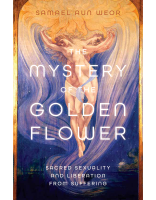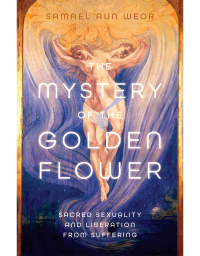Upon reaching this chapter of Christmas Message 1971-72, we cannot overemphasize something very distressing that we have been able to verify through many years of constant observation and experience. In plain language, I wish to refer to mythomania, a marked tendency among people affiliated with various metaphysical schools. After a few hallucinations, people who seem to be very straightforward, become mythomaniacs overnight. Without a doubt such people with subjective psyches almost always manage to take many the unwary by surprise, and they in turn become their followers.
The mythomaniac is like a wall without a foundation; a light push is enough for him to become rubble.
The mythomaniac believes that matters of occultism are matters “as easy as apple pie,” and from one moment to the next he declares that he is mahatma, a resurrected master, hierophant, etc. The mythomaniac generally has impossible lures and invariably suffers from what is called “delusions of grandeur.” These people present themselves as reincarnations of masters or fabulous legendary heroes from fiction.
However, it is clear that we are emphasizing something that deserves explanation.
Egoic centers of the animal subconsciousness, which through their interrelationships follow certain mental groups, can provoke through association and imaginary reflexes something like “spirits” which are almost invariably only illusory forms, personifications of the same pluralized ego. It is not unusual for some aggregate psyche to assume the form of Jesus Christ in order to issue false oracles... Any of these many entities which together constitute that which is called ego can, if it so wishes, take the form of a mahatma or guru, and so when the dreamer returns to a state of wakefulness, he will say of himself, “I am self-realized. I am a master.”
In this regard, the observation must be made that in the subconscious of all people lies the latent tendency to take advantage of personification.
This then is the classic reason that many Asian gurus warn against all possible forms of self-deceit before initiating their disciples in transcendental magic.
“A monk went to Te Shan, who closed the door in his face. The monk knocked and Te Shan asked, ‘Who is it?’ The monk said, ‘The lion cub.’ Te Shan then opened the door and jumped onto the neck of the monk as though riding, and cried, ‘You beast! Now where do you go?’ The monk failed to answer.
“The term ‘lion cub’ is used by Zen Buddhists to denote a disciple well able to understand Zen Truth; when the Masters praise or prove a disciple’s understanding, this term is often used. In this case, the monk presumptuously called himself ‘the lion cub,’ but when Te Shan gave him a test by treating him like a real lion cub—when he rode on his neck, and then asked him a question—the monk failed to answer. This proved that the monk lacked the genuine understanding he claimed to possess.” —Garma C. C. Chang, Practice of Zen
That monk was in fact a man whose consciousness was asleep; he was sincere but mistaken, a mythomaniac.
“One day, in the monastery of Nan Chuan, the monks of the east and west wing had a dispute over the possession of a cat. They all came to Nan Chuan for arbitration. Holding a knife in one hand and the cat in the other, Nan Chuan said, ‘If any one of you can say the right thing, this cat will be saved; otherwise it will be cut into two pieces!’ None of the monks could say anything. Nan Chuan then killed the cat. In the evening, when Chao Chou returned to the monastery, Nan Chuan asked him what he would have said had he been there at the time. Chao Chou took off his straw sandals, put them upon his head, and walked out. Whereupon Nan Chuan commented, ‘Oh, if you had only been here, the cat would have been saved!’” —Garma C. C. Chang, Practice of Zen
Chao Chou was obviously a man of awakened consciousness, a genuine illuminati.
It is impossible to awaken the consciousness, making it totally objective, without previously eliminating the subjective elements of perception. Such sub-human elements are formed by the whole multiplicity of brawling, loud-mouthed egos that together constitute the ego, the “I,” the “myself.”
The Essence, imprisoned within all the subjective, incoherent entities, sleeps profoundly. The annihilation of each one of these sub-human entities is essential to liberate the Essence. Only by the emancipation and consequent awakening of the Essence does enlightenment come.
Hindustani Yogis try to awaken consciousness through the Kundalini; unfortunately they do not teach the didactics, the procedure.
They say that when the Kundalini sleeps coiled within the Muladhara chakra, man is awakened in this valley of tears. This is absolutely false because the intellectual humanoid, wherever he may be, whether in the physical world or in the superior dimensions of Nature, is always asleep.
They say that when the Kundalini wakes, man sleeps in this enters into his causal body. Such an affirmation is profoundly utopian for two reasons. The three-brained, three-centered biped mistakenly called human is always asleep here and now; not only has he already lost planetary consciousness, but in addition, and this is worse, he continues to degenerate. The rational animal has no causal body; he must fabricate it through sexual alchemy in the fiery forge of Vulcan.
The most important principle is when the Kundalini is awakened; it ceases to be a static power and is transformed into a dynamic force. To learn to manage the active power of Kundalini is imperative in order to awaken consciousness.
At the height of chemical intercourse we must intelligently direct the rays of Kundalini against the red demons (egos) within which the Essence, the consciousness, is unfortunately trapped.
The hunter who wants to catch ten hares at the same time catches nothing; so also the Gnostic who yearns to eliminate the various egos simultaneously, fails miserably.
Esoteric work that is directed towards dissolving any psychological defect is a veritable riddle; not only must we first understand the defect in question in each and every subconscious level of the mind, but we must eliminate each of the egos that characterize it.
From all points of view, it is clearly evident that very long and patient work is necessary for the elimination of any psychological defect.
Many aspirants who have come into this three-dimensional Euclidean world absolutely chaste have failed miserably when put to the test in the supersensible worlds, demonstrating with conclusive and definitive facts that they were fornicators and adulterers.
Any psychological defect can disappear from the intellectual zone yet continue existing in the various regions of the subconscious.
Someone could be an honorable person in this physical world and even as far as the forty eighth subconscious zone, and nonetheless fail in the forty-ninth.
Now our beloved readers must reflect on and comprehend how difficult it is to awaken consciousness, to become a “lion’s cub,” understand true Zen, and experience Tao.
It is not so easy to awaken consciousness. One must liberate the Essence, remove it from within its subconscious dwelling, destroy those dwellings, turning them to dust. This is a gradual process, very slow, painful, and difficult.
The amount of liberated Essence is proportionate to the percentage of increased consciousness.
Intellectual humanoids, mistakenly called human beings, in truth possess only three percent consciousness. If they had even ten percent, wars would be impossible on the face of the Earth.
The original Essence that is liberated at the beginning of the process of death, unquestionably becomes the Seminal Pearl.1 This is the mathematical point of consciousness mentioned in the gospel of Tao. Here begins the mystery of the golden flower.
The mythomaniac boasts of being enlightened without having liberated the Essence, without even possessing the Seminal Pearl.
People with subjective psyches are absolutely utopian. They mistakenly suppose that they can be enlightened without having achieved the death of the ego in a radical and categorical way. These people do not want to understand that as long as they are self-imprisoned, genuine, objective enlightenment is completely impossible.
It is obvious that there is self-imprisonment when the Essence is bottled up within the pluralized ego.
The imprisoned Essence only functions in accordance with its conditioning. The ego is subjective and sub-human. Obviously, the perceptions that the Essence receives through the senses of the pluralized ego are deformed and absurd. This leads us to the comprehension of how difficult it is to reach true objective enlightenment.
The price of enlightenment is paid with one’s own life. In the sacred land of the Vedas there are chelas (disciples) that after thirty years of intensive work are only at the beginning, in the prologue of their work.
The mythomaniac wants to be enlightened overnight, presumes he is wise, and believes he is a god.







